Bugs and boys
I think I’ve mentioned that Cindy teaches biology classes at the local branch of the university. She recently ordered some cultures, and I got invited to look at samples under my microscope to be sure there were actually live critters in them.
Stentor sample: Live critters aplenty, but none of the stentors. They’re sessile (they attach to a surface and filter feed) so Cindy didn’t seem too worried that a drop pulled out of the culture didn’t bring up any.
Blepharisma: The culture was clearly alive and well.
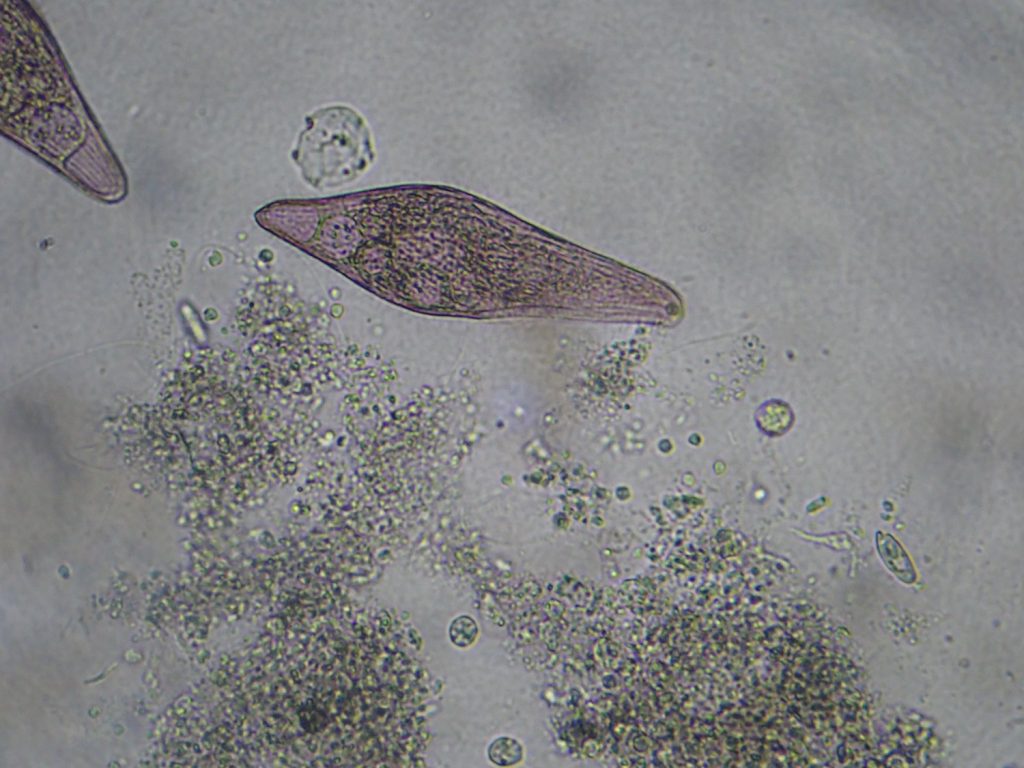
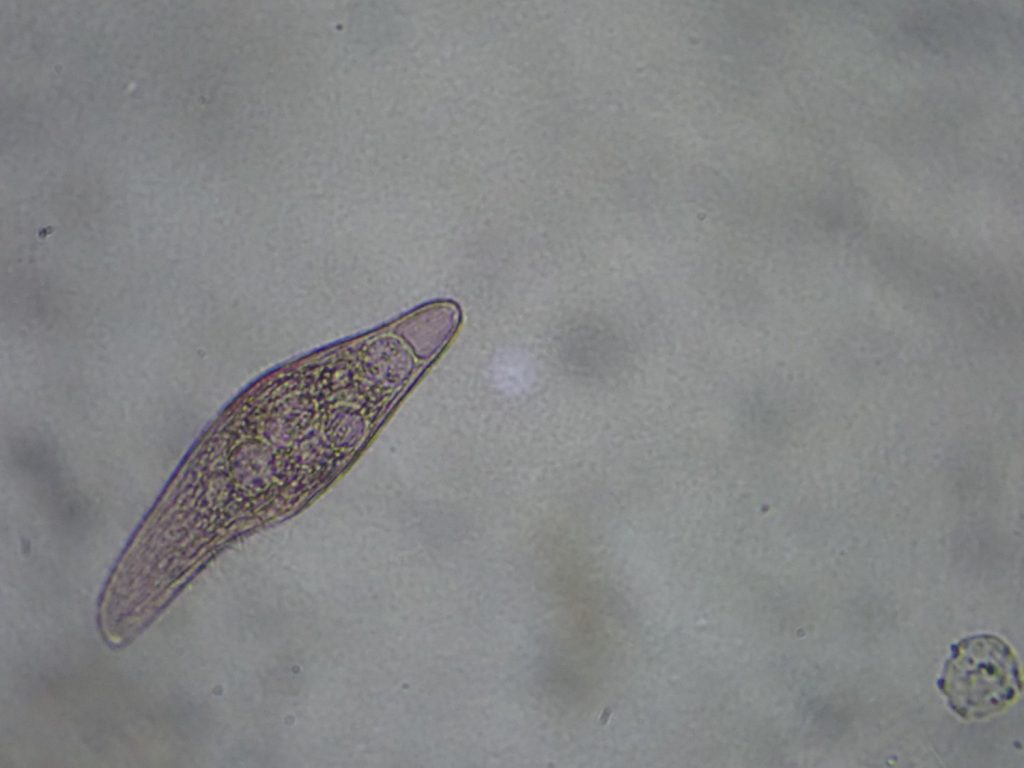
These are fairly huge for protozoa, and are at the upper limit of complexity for a single-celled organisms. The nice pink color is real; it’s a pigment called blepharismin, which is apparently a visual pigment. It allows the little guys to sense and avoid high light levels.
Desmids.
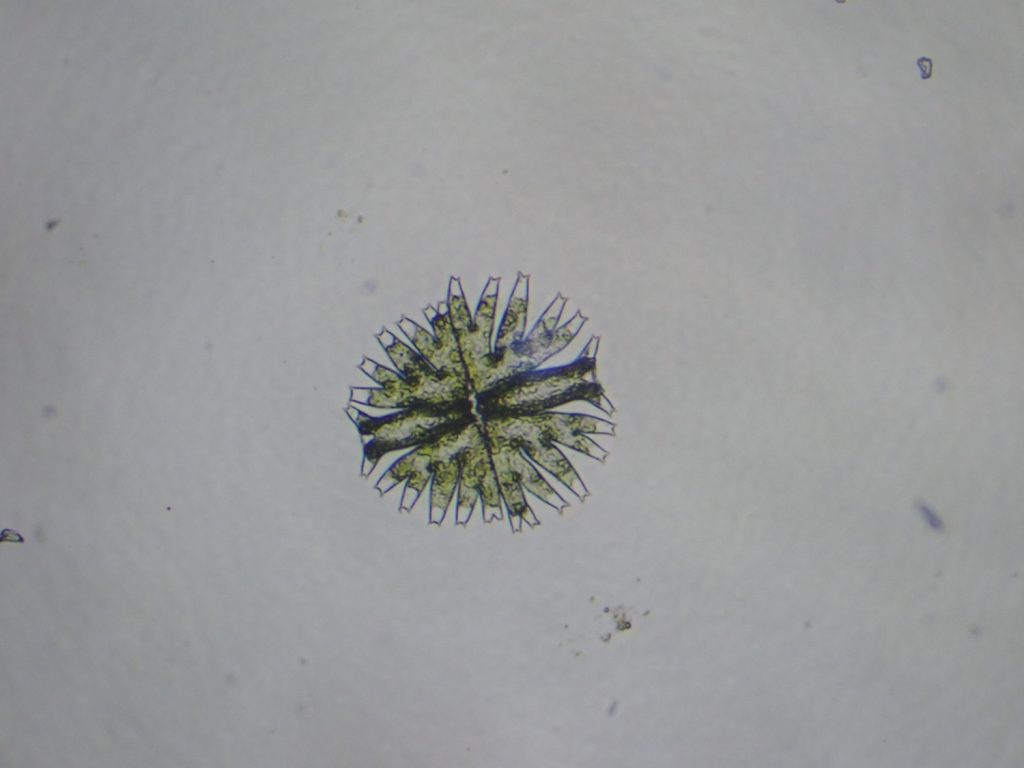
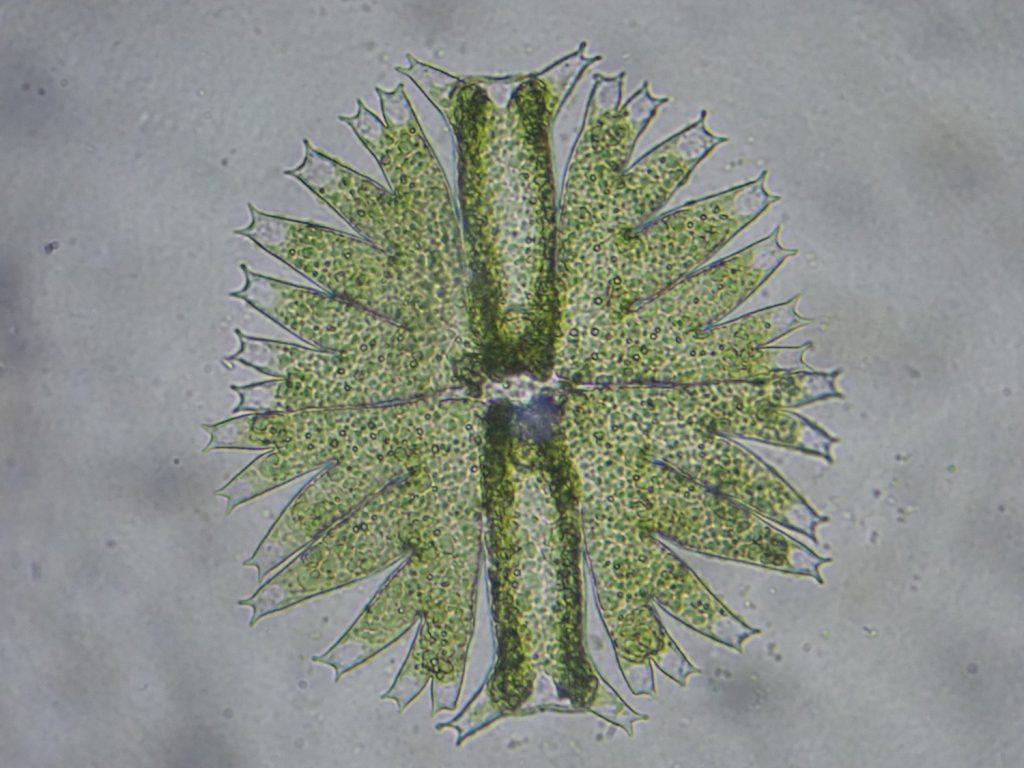
Yes, the second is at higher magnification. It’s a fairly large unicellular green alga, a member of the charophyte division. The charophytes are thought to be the closest algal relatives of land plants. Pretty little things, aren’t they?
Cindy tells me I can dump the cultures in the fish tank when she’s done with them, rather than flush the poor guys down the sink. I already have Blepharisma and Stentor in my tank, though not in the numbers needed to collect for her class. I don’t mind adding some desmids to my tank. My tank has abundant rotifers, so I’ll be giving her some samples for her class; with their little whirling “wheels”, if they don’t catch the interest of her students, nothing will.
Cindy seems impressed with my microscope; the ones at her school are economy-class student microscopes. Not that mine is business-class, exactly, but it’s very nice for an amateur microscope. And I can probably upgrade it to first-rate optics if I ever feel the inclination (and have the budget).
Most of the weekend was cleaning my garage; I got it about two-thirds done. (The rest will be next week.) We have evidence of mice in the garage and I was looking for any nest. Didn’t find one, but I set out some bait. (We are past trying gentler approaches.) I found that there were basically three kinds at my local hardware store: At one extreme, a bait whose active ingredients were listed as salt and wheat gluten. Death by constipation? That strikes me as neither particularly merciful nor very effective; we make the mice very sick but don’t necessarily kill them. At the other extreme is bromethalin, a nerve poison that apparently has no antidote. Pass. In between is cholecalciferol — Vitamin D. It’s poisonous in high doses, causing a lethal rise in blood calcium, and rodents are reputedly particularly susceptible. I went with that.
Warfarin is apparently no longer a thing for rat bait. The rodents have evolved resistance to it.
Anyway, I got all that done Friday and planned some hiking Saturday. My initial plan was to photograph the Ortega Formation reference section, then head to the Rio Grande Gorge to hike Arroyo Hondo and look for staurolite. But Gary turned out to be unavailable, and Alden reported he was already hiking with young men from our church. I found myself joining Alden, which as always was great fun.
The young men in question are mostly twelve to thirteen years old. (I know: very young men.) In the LDS church, boys this age are ordained as deacons, with an LDS deacon being much closer to an altar boy that to a deacon as understood in other Christian denominations.
We would be descending the Red Dot Trail from White Rock to the Rio Grande. I got there just in time to find Alden waiting for the last of the boys to show up. I was the only other adult, and he was grateful to have me there, since the “two-deep” rule would mean canceling the hike if there was only one adult. As it turned out, two other men joined us shortly after. Alden briefed the boys on rattlesnake safety, and we head down the canyon rim.
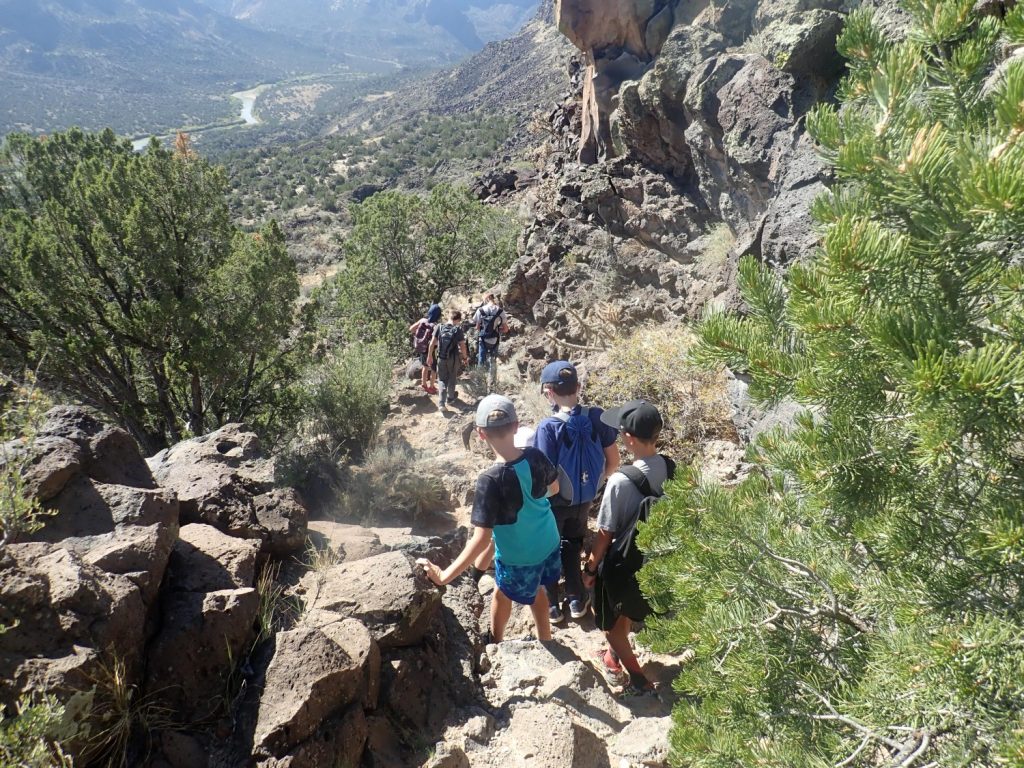
Pretty much our entire hike would be over the Cerros del Rio Basalt, formed from low-silica lava erupted around 3 million years ago. I noted wrily to Alden that the vent location might very well have been directly under his father Gary’s house. (No joke; the La Vista division in White Rock is a high point in the Cerros del Rio Basalt that is a presumptive vent area.)
Hints of pahoehoe roping in the lava surface.
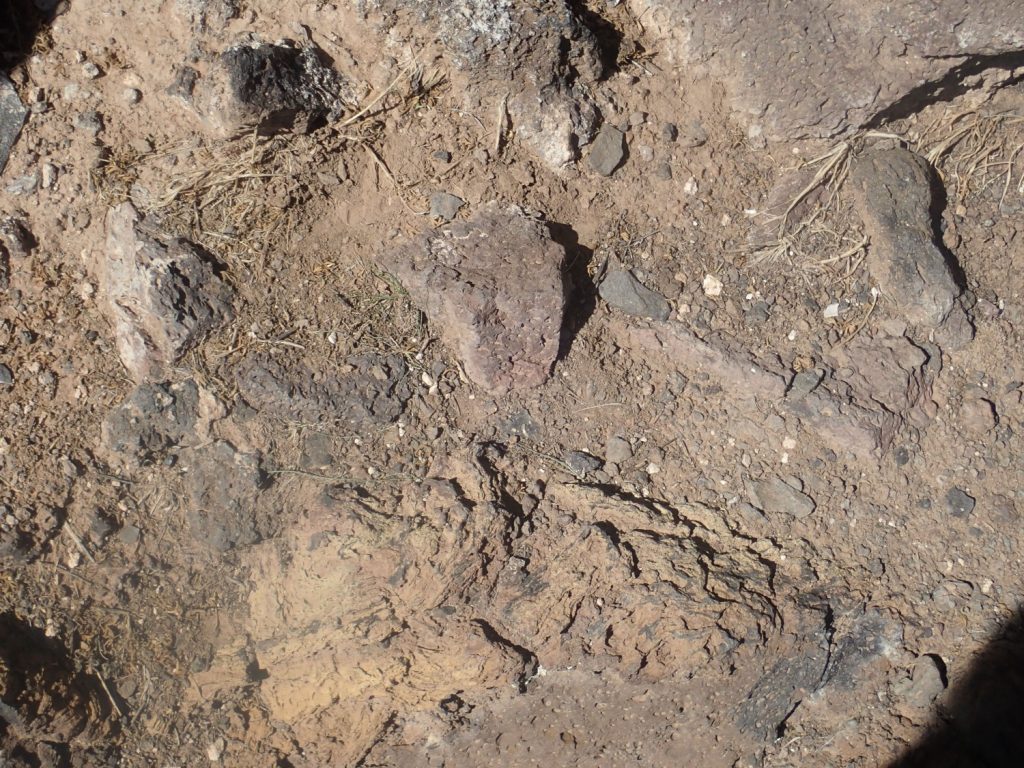
Pahoehoe is the more fluid form of basaltic lava, which acquires a kind of ropy surface. It’s rare to find the surface preserved in White Rock Canyon, but sometimes erosion of an upper flow exposes pahoehoe ropes in a lower flow, as seems to be the case here.
Below the basalt is colluvium, a hifalutin word for stuff that washes or falls down from above and accumulates below.
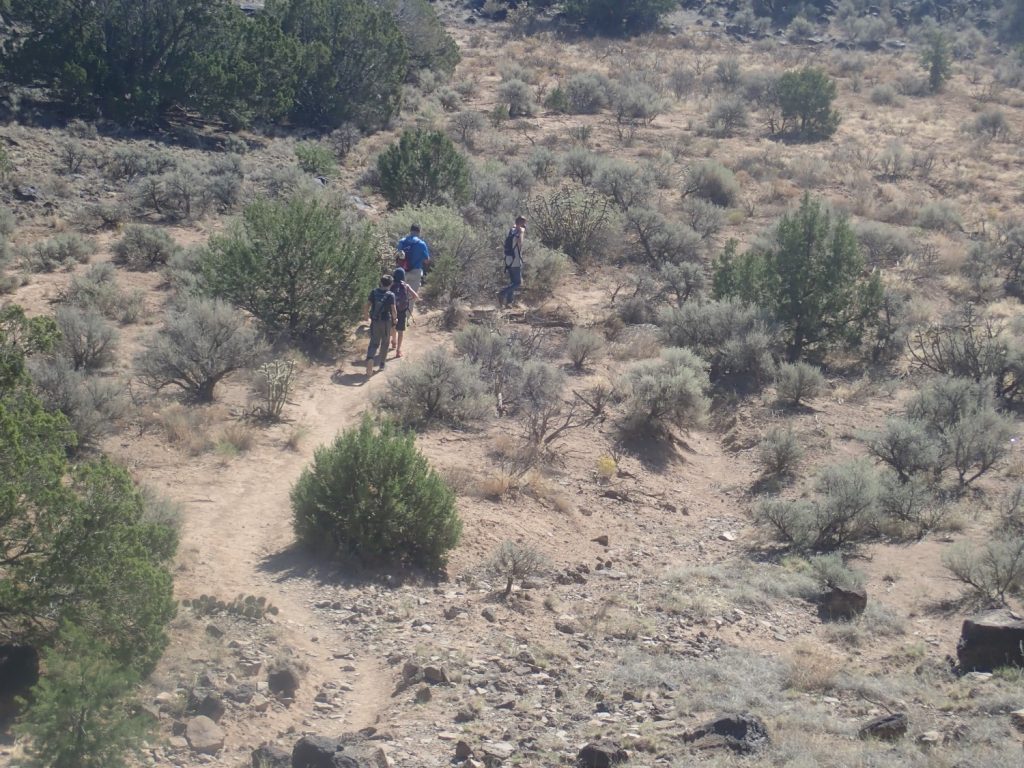
And, yes, I’m falling behind — but not too much and mostly because I’m pausing for photographs.
Looking back at the mouth of Pajarito Canyon.
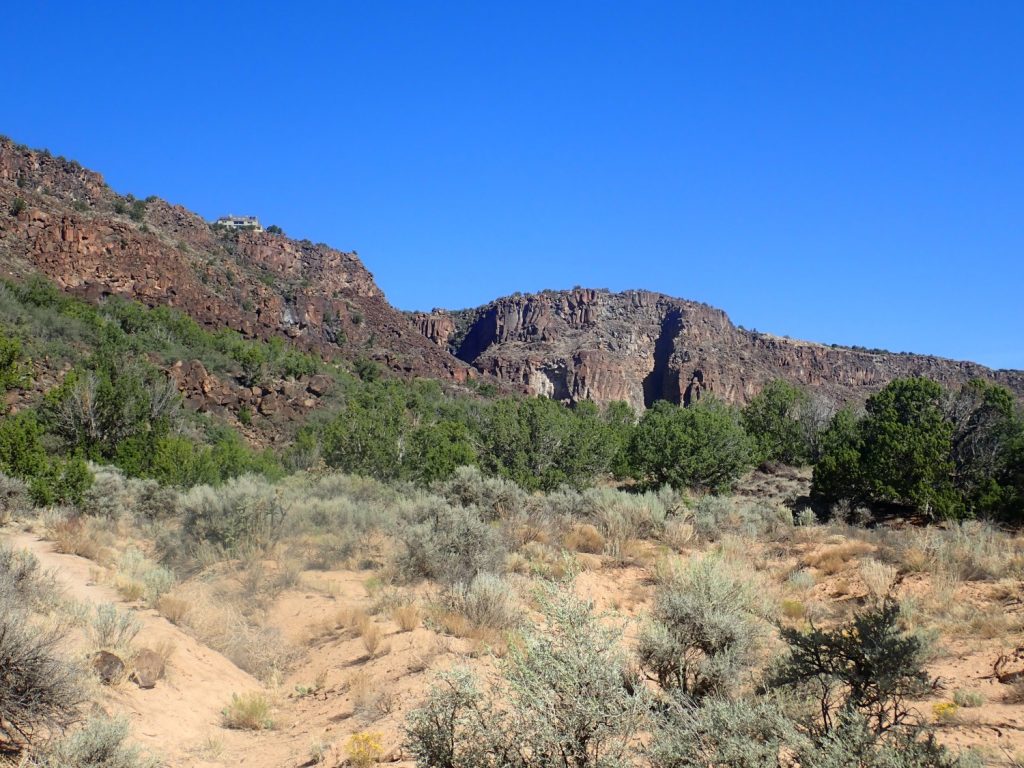
There is a great thickness of basalt around the mouth of Pajarito Canyon, showing that the basalt filled a paleocanyon that followed more or less the same course.
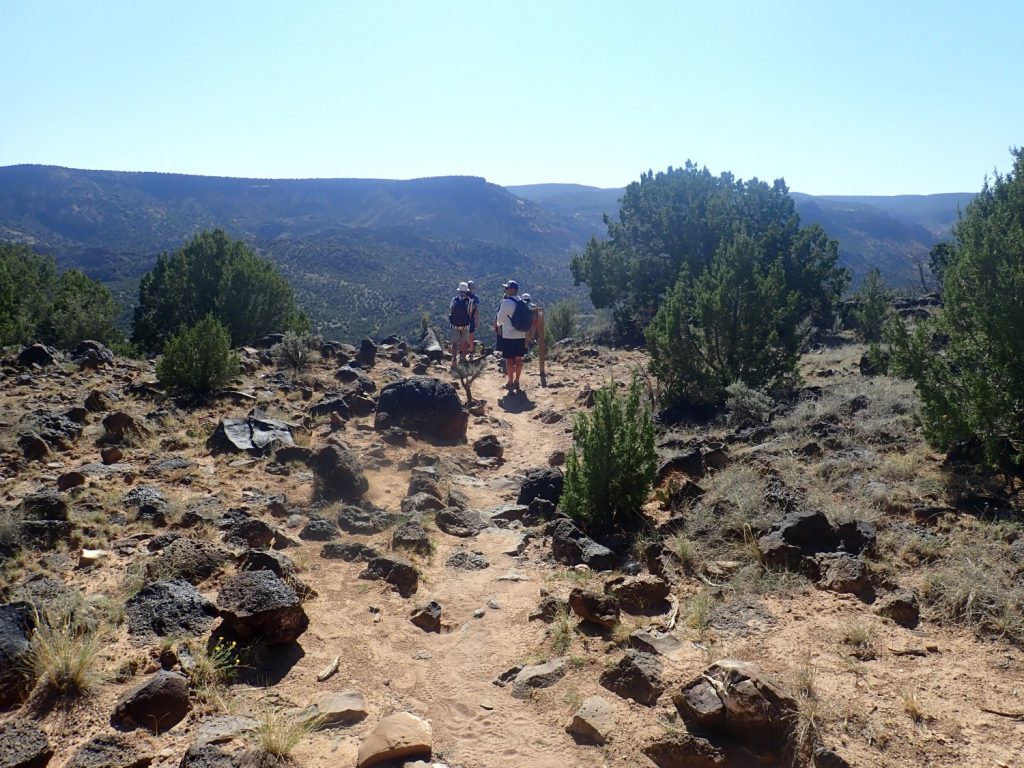
Break time, with what passes for shade in the pinon scrub of northern New Mexico.
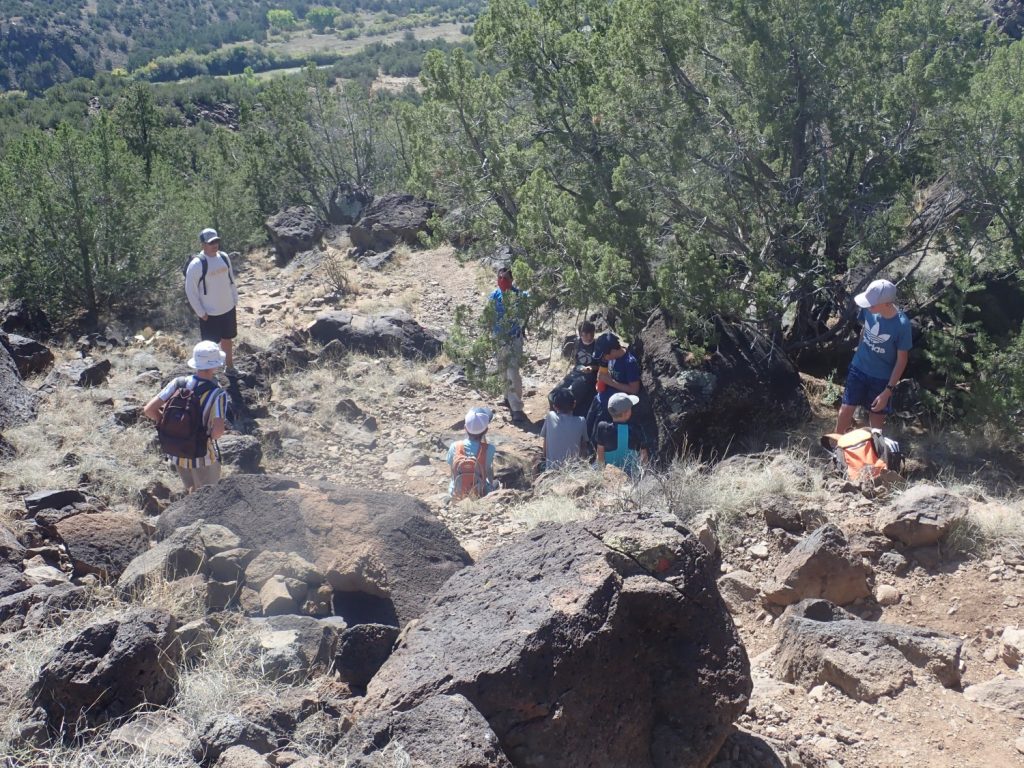
And we cross a small stream, where one of the boys spots a good explanation for the rattlesnake lecture.
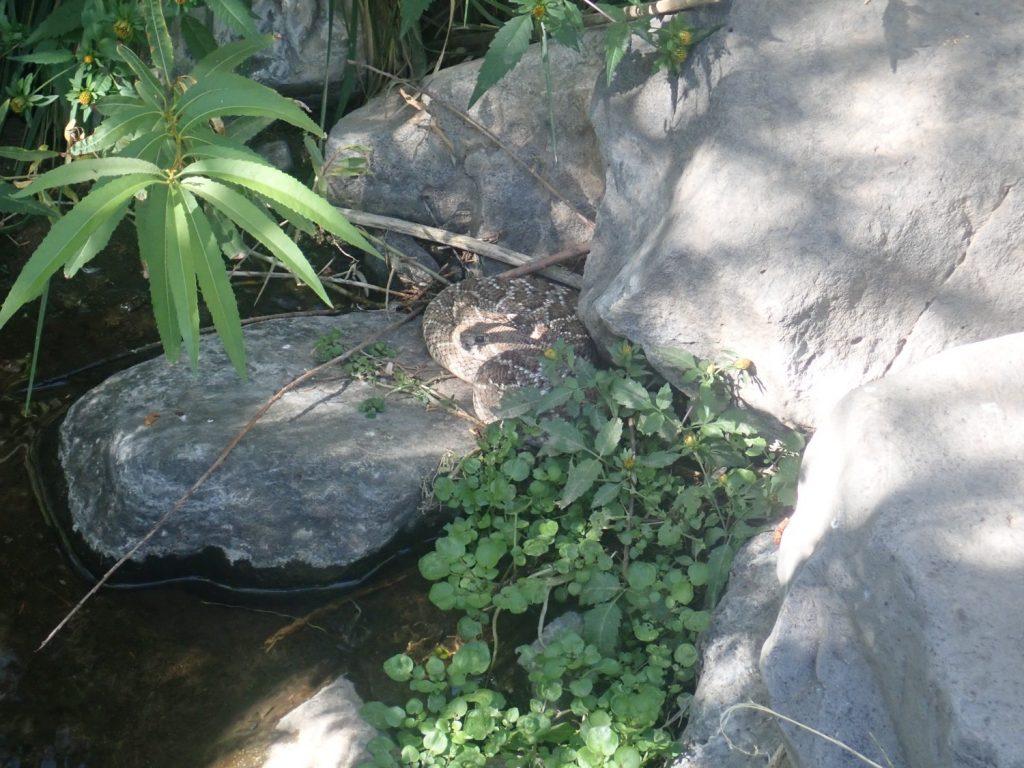
Yep, a fine fat Crotalus atrox — the Western diamond rattlesnake. He kept to himself and did not rattle; we convinced the boys to leave him alone. (Didn’t take much convincing, actually; these are reasonable intelligent boys.)
And on to the water hole!
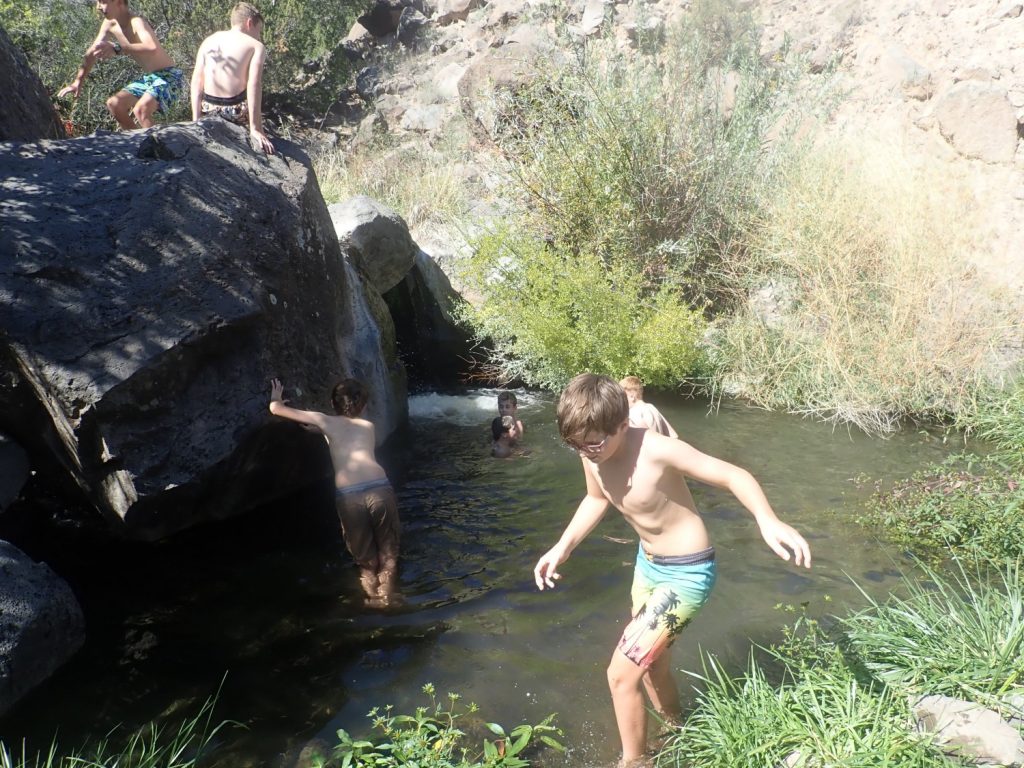
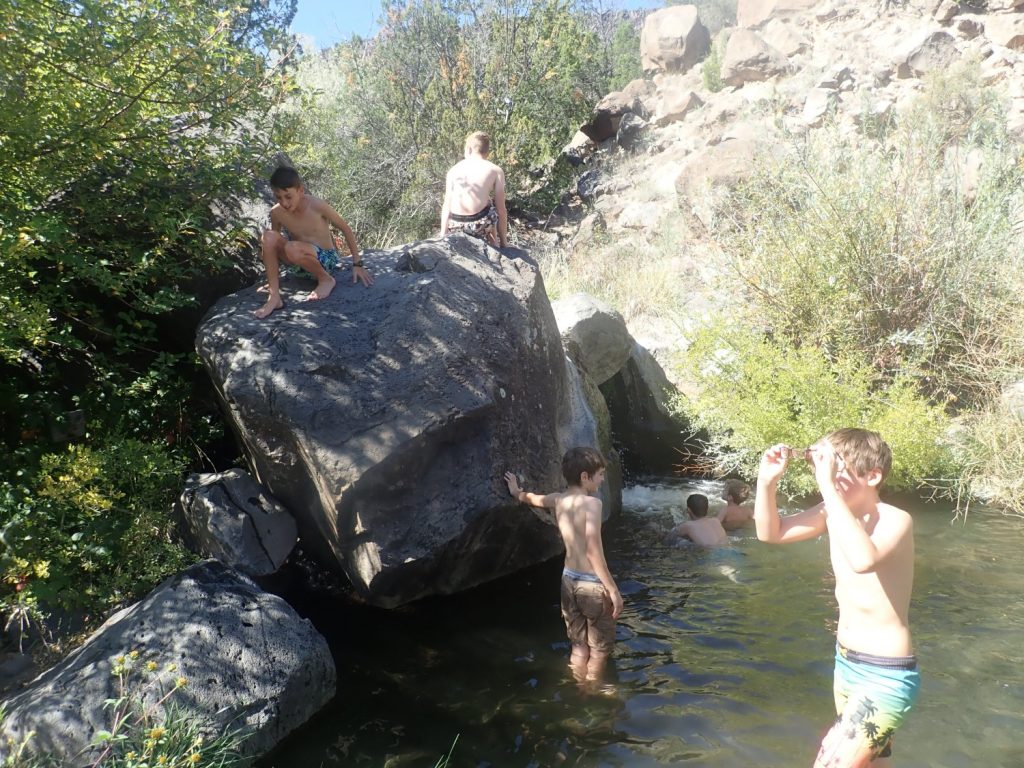
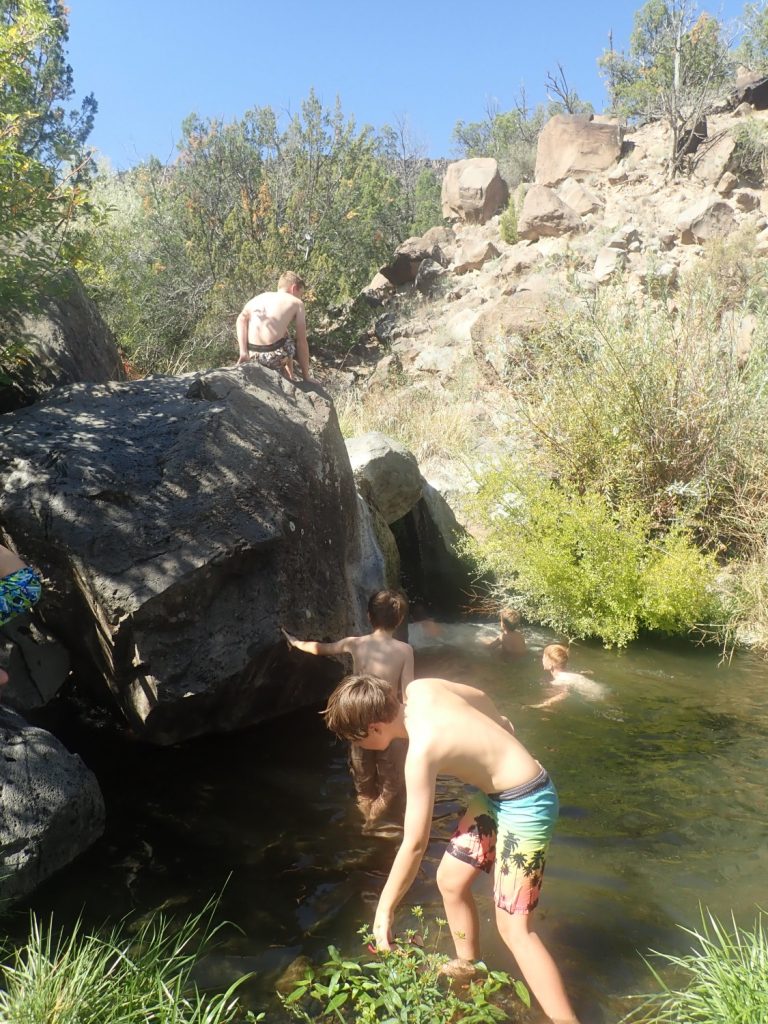
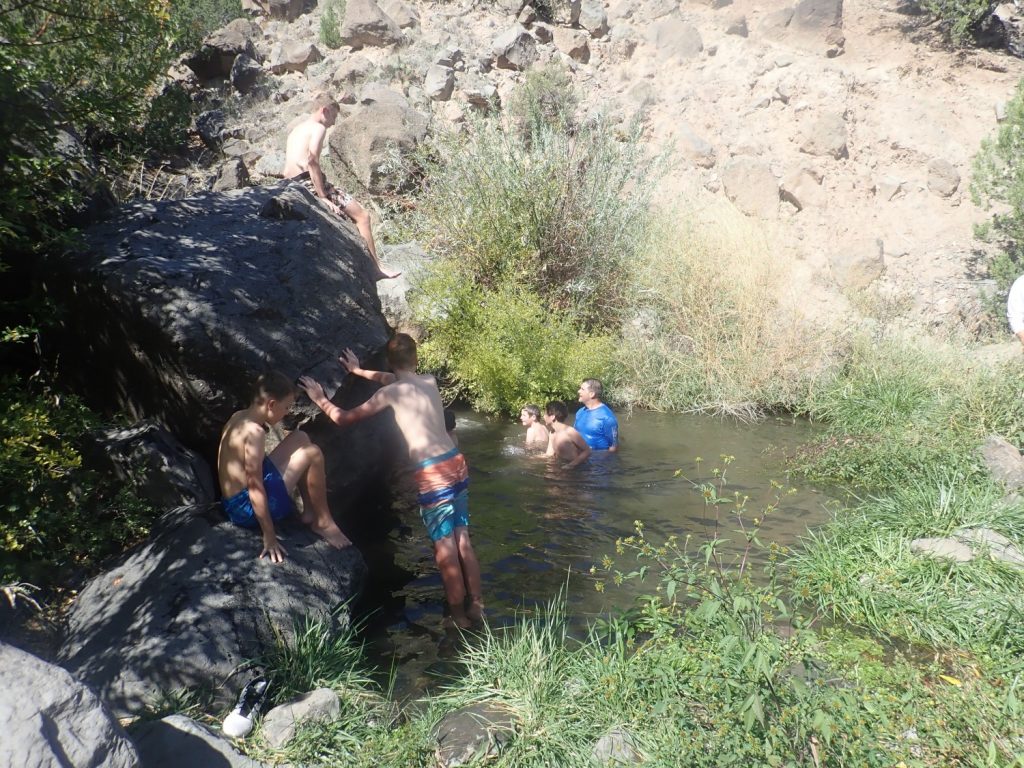
I don’t know what it is about boys and water. I could go on about archetypal memories of the womb, but I don’t really believe that nonsense.
The bush at extreme left in the final photograph is poison ivy. Yep, one of the boys stumbled into it. He started washing himself down as best he could while I dug around in my pack for soap. Turns out I hadn’t brought my soap bar. But I had some canned diabetic milk, which has a fair amount of oil and emulsifiers, and decided that was the next best thing. The youngster got doused in canned diabetic milk and scrubbed it off in the water. Hope it did some good.
Then of course we had to briefly visit the Rio Grande itself.
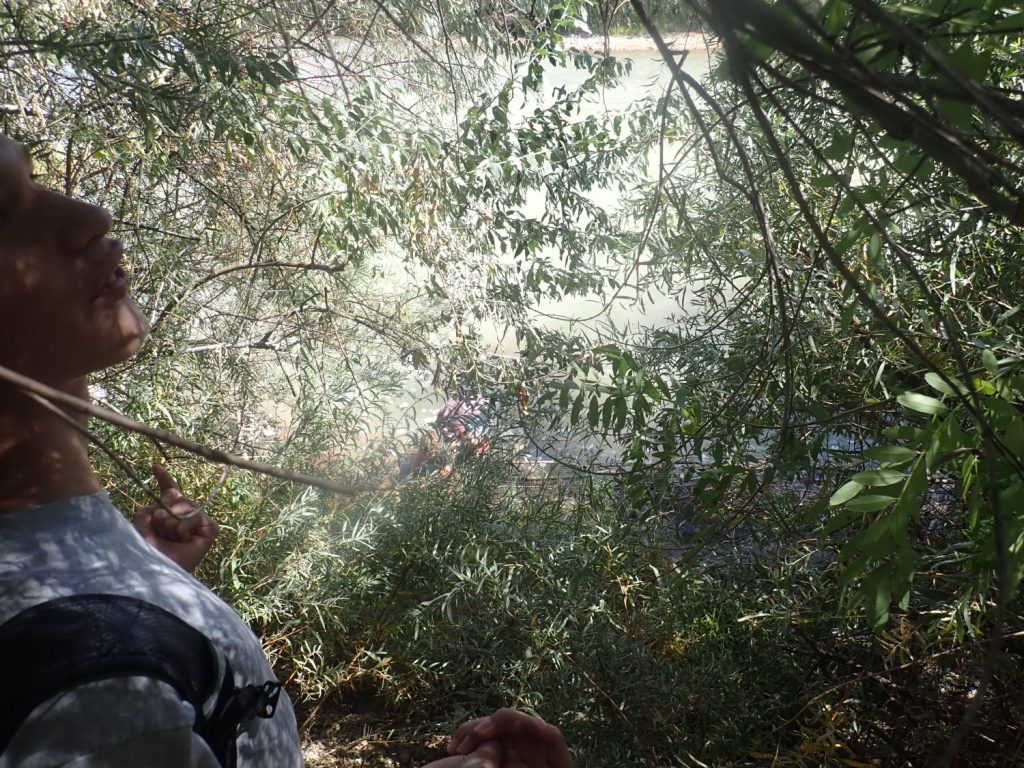
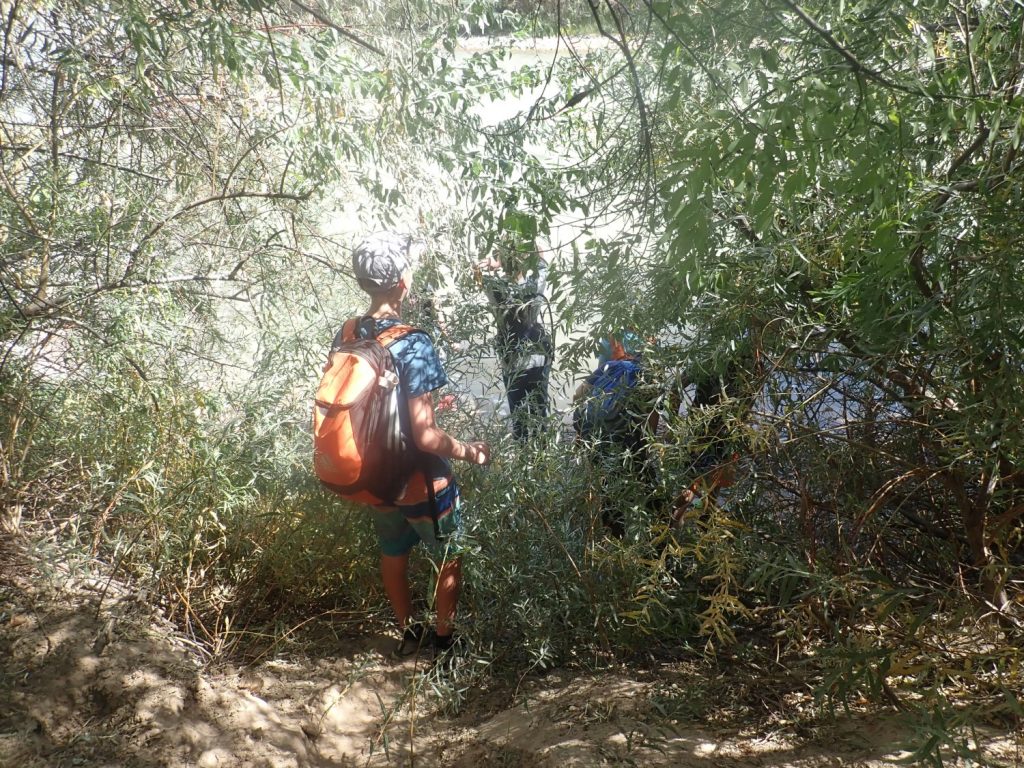
And now for the hard slog back to the top. The view of the canyon rim is spectacular.
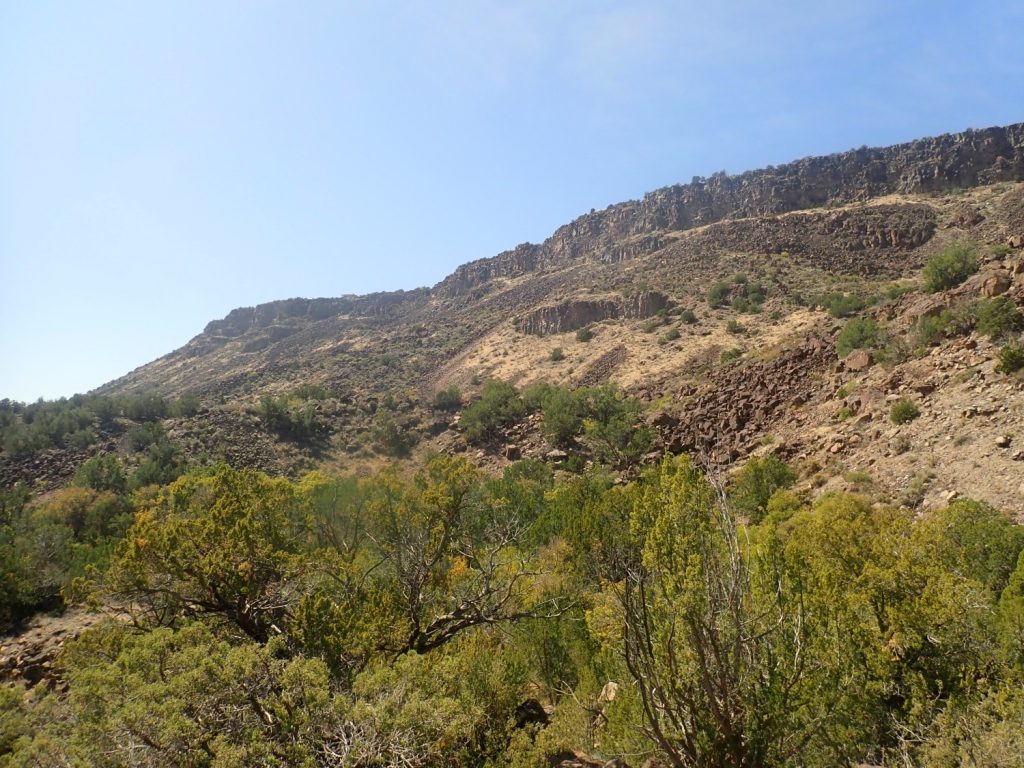
I confess I found it a fairly exhausting slog.
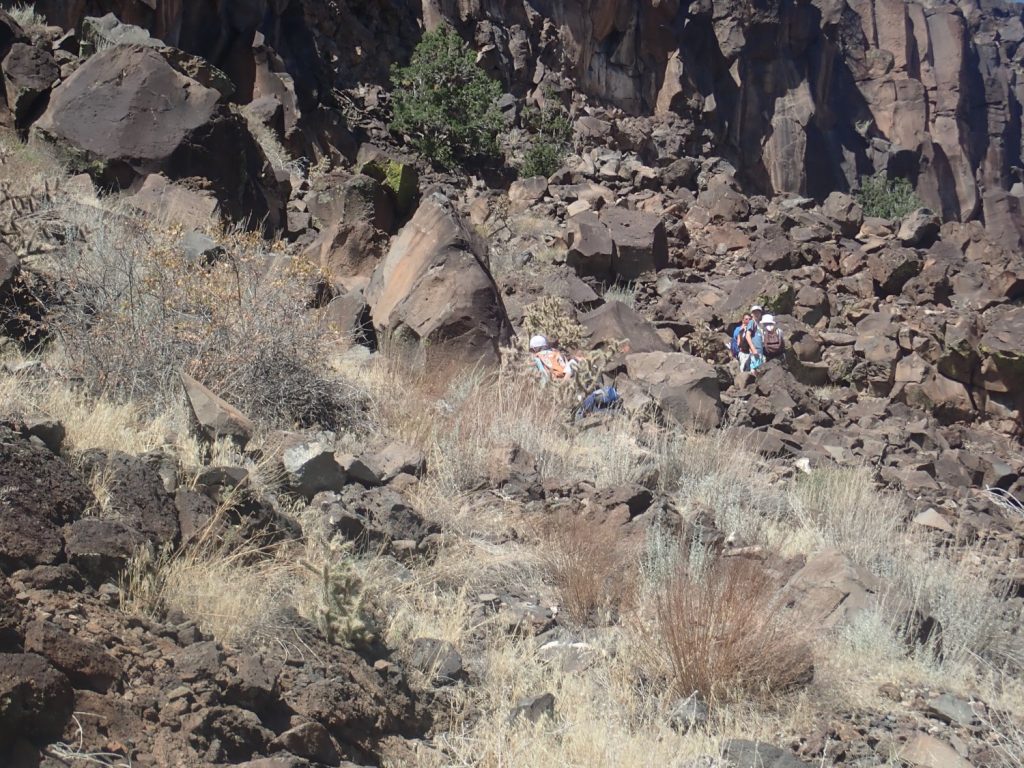
I got up this morning feeling like I had been lightly beat all over with a baseball bat, and with a pounding headache. I drank some water on the hike, but apparently not enough. Fortunately, headache pills were effective.
I may have future opportunities to work with these kids, perhaps taking them fossil hunting. Looking forward to it if it happens. Meanwhile, Arroyo Hondo is still there, and Cerro Pico still beckons.
